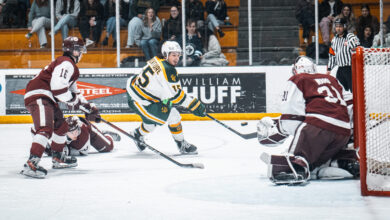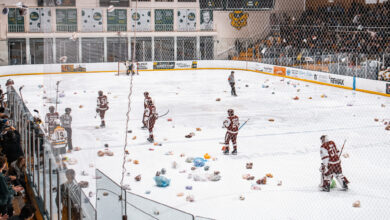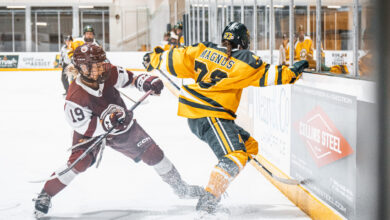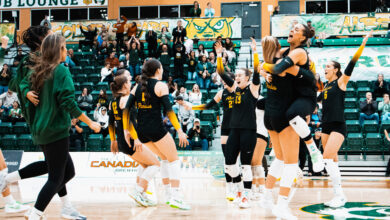Point/Counterpoint: The entertainment value of big serves in tennis
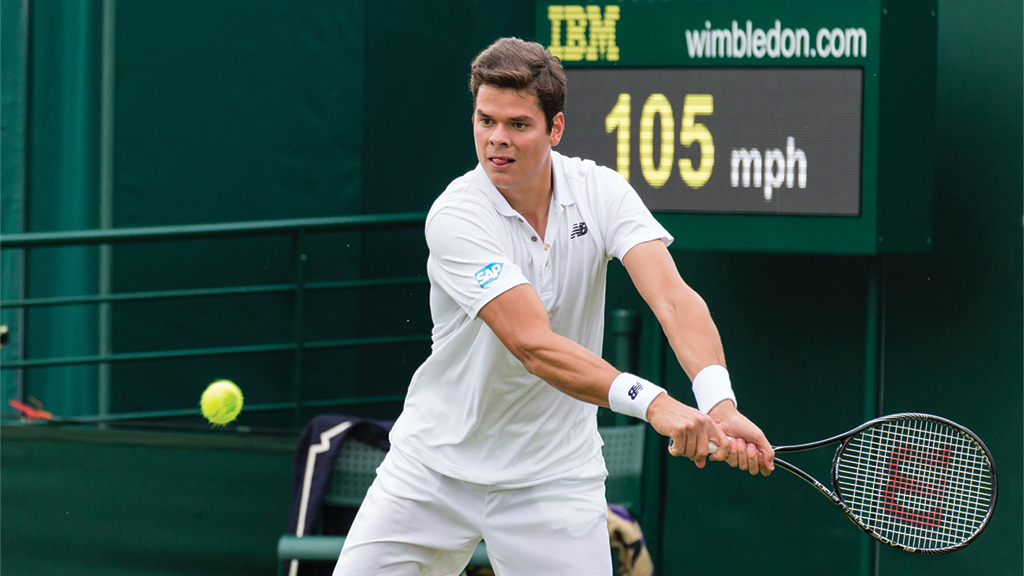 Raonic
RaonicPoint: Mike Simion
Over the last 10 or so years in men’s tennis, there has been a rising number of six-foot five-ish players who have taken up a spot in the Association of Tennis Professionals top 20. These players, for the most part, have adopted the natural advantage their size brings to serving and have used it to dominate many of their opponents. From a simple perspective, the current landscape of men’s tennis only really offers two – yes, we’re talking really simple – styles of play. The two camps that players can reside in are big servers or baseline players. While neither camp is mutually exclusive from another, big servers still need to hit balls from the baseline and baseline players still try to hit big serves. But it’s obvious that watching a baseline player is more entertaining.
Tennis is at its best when rallies start to develop a rhythm. It’s when the longer rallies start to take shape, and the opponents start to get a feel for the back and forth between one another. In the heat of a long rally, a player must make a decision — whether conscious or not — before every stroke, to either disrupt the rhythm of the rally by trying to play a winning shot, or to obey the rhythm of the rally with a passing shot in hopes of outlasting his opponent. It’s these rallies that demonstrate the breadth of shot making and skill that players possess and give tennis its true appeal. But the game plan of a big server runs antithetical to this.
The big servers of tennis, players like John Isner, Juan Martin Del Potro, and Milos Raonic, try to prevent this rhythm from taking shape by attempting to end rallies in three balls or under. While it may be an effective winning strategy, it unquestionably strips a match of its most satisfying exchanges. Looking back at the decade’s best matches, it’s clear that the most exciting tennis comes from two baseline players going head to head. Nadal and Federer’s 2008 Wimbledon Final and Nadal and Djokovic’s bout at the Australian Open represent the height of this era of tennis.
Big serving can be seen as tennis’ equivalent to the trap in hockey. Both may prove to be an effective strategy for players and teams of a certain makeup, but neither makes for great entertainment.
Counterpoint: Dan Guild
Big Serves Make Big Smiles. In the same way that fans love a hard slap shot, a home run or a long drive in golf, tennis fans love a big serve.
If you’re watching a tennis match with no preference on who wins and are simply seeking some entertainment, a long rally between two good players can surely offer that, but there are so many players on tour these days capable of keeping a rally going, waiting for their opponent to either make an error or finally float a ball back to them easy enough so they hit a winner down the line can get kind of repetitive. Being able to watch one of a handful of players who can pulverize the ball basically from rest and with accuracy is special.
It’s fun to get behind players with a heavy serve not only to watch their unique ability, but because they become champions — like Pete Sampras or Serena Williams. If you’re cheering for someone who can dominate with their serve, the excitement derived from watching them hold every service game with 20 or more aces in a match and then finally get the break that wins it all is better than seeing a few good baseline rallies.
People want to see somebody do something that seems humanly impossible, and when a player sends an ace whistling past their helpless opponent at 220 kilometres per hour, you can hear a buzz amongst the spectators, and for those on their side it’s more than enough reason to stand up and start waving your nation’s flag.
Though baseline play can be very exciting, it can also be largely repetitive. A fast well-placed serve is as pure a display of timing, technique, and power as you’ll find in the game.

